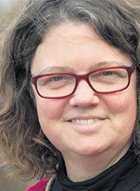School Interventions
School Interventions
Children, whose parents do not have an education beside the final exam of primary school, perform significantly worse than other children in primary school. They already perform worse in the first national tests in 2. grade (Danish) and 3. grade (mathematics), and register data analysis show that very few children manage to catch up with their classmates during the school days. Internationally tested efforts with tutors and structured student collaborations have shown good results – especially in the USA. Can they be targeted to classes with a high proportion of socioeconomically weak children and thereby promote learning and inclusion in a Danish context?
Time period: | 2015 – 2018. |
Target group: | Students in 3. and 5. grade. |
Number of participants: | Recruitment occurs in spring 2016. It is expected that 600 classes in total will participate in the test, comprised of a combination of 3., 5., and 8. grades. |
Intervention: | Over a period of four months there will be implemented the following two efforts in the students’ supporting teaching: Tutor procedure. The school gets resources to include young students in the teaching. The tutor gives intensive mathematics training for students who need extra support. Structured student collaboration. The school receives support to accomplish structured student collaboration, in which 8. grades students read one to one with students in 3. or 5. grade. The expectation is that the effort strengthens the youngest students’ reading skills, increase their well-being and strengthen the eldest students’ sense of responsibility and well-being |
Research: | The effect of the school-targeted efforts will be evaluated in a randomized controlled trial and it is carried out with the Ministry of Children, Education and Equality. Among classes that join the trial scheme, it is decided by lot which of the two efforts the class should implement, or if the class should function as a comparison group. Thus, it will become random, whether the class will have to implement the one effort instead of the other (or no new effort). As a rule this implies that you can expect that the students will be comparable across the different effort groups, and that the differences between the students over time is due to the form of supporting effort they receive. The effect of the two efforts will be measured in the students’ results in the national tests in both Danish and mathematics. Likewise, the annual satisfaction measurement will be used to examine whether the effort is promoting the welfare of the students. |
Partners: | Undervisningsministeriet, Rambøll Management Consulting, VIA University College and Professionhøjskolen Metropol. |
Results: | Expected in 2017. In 2018 effective interventions are spread to several schools in Denmark. |





